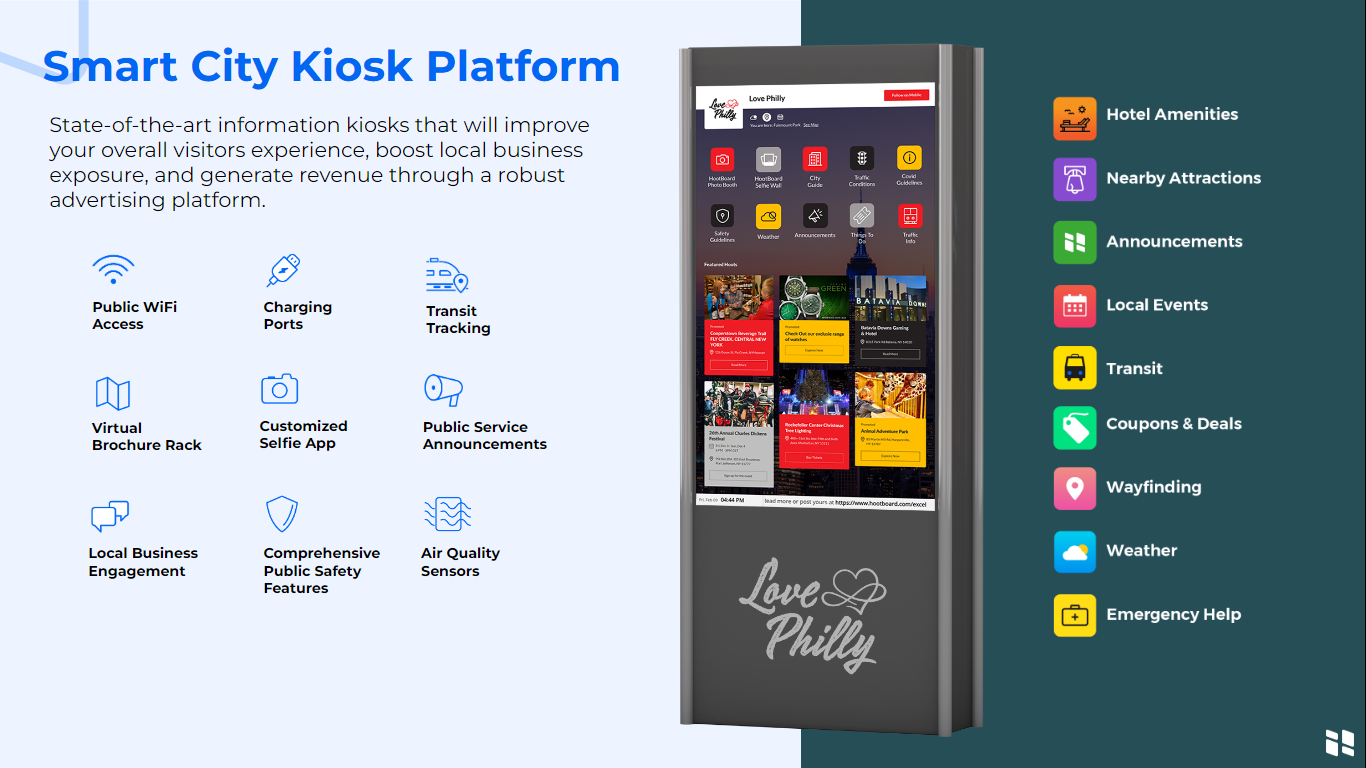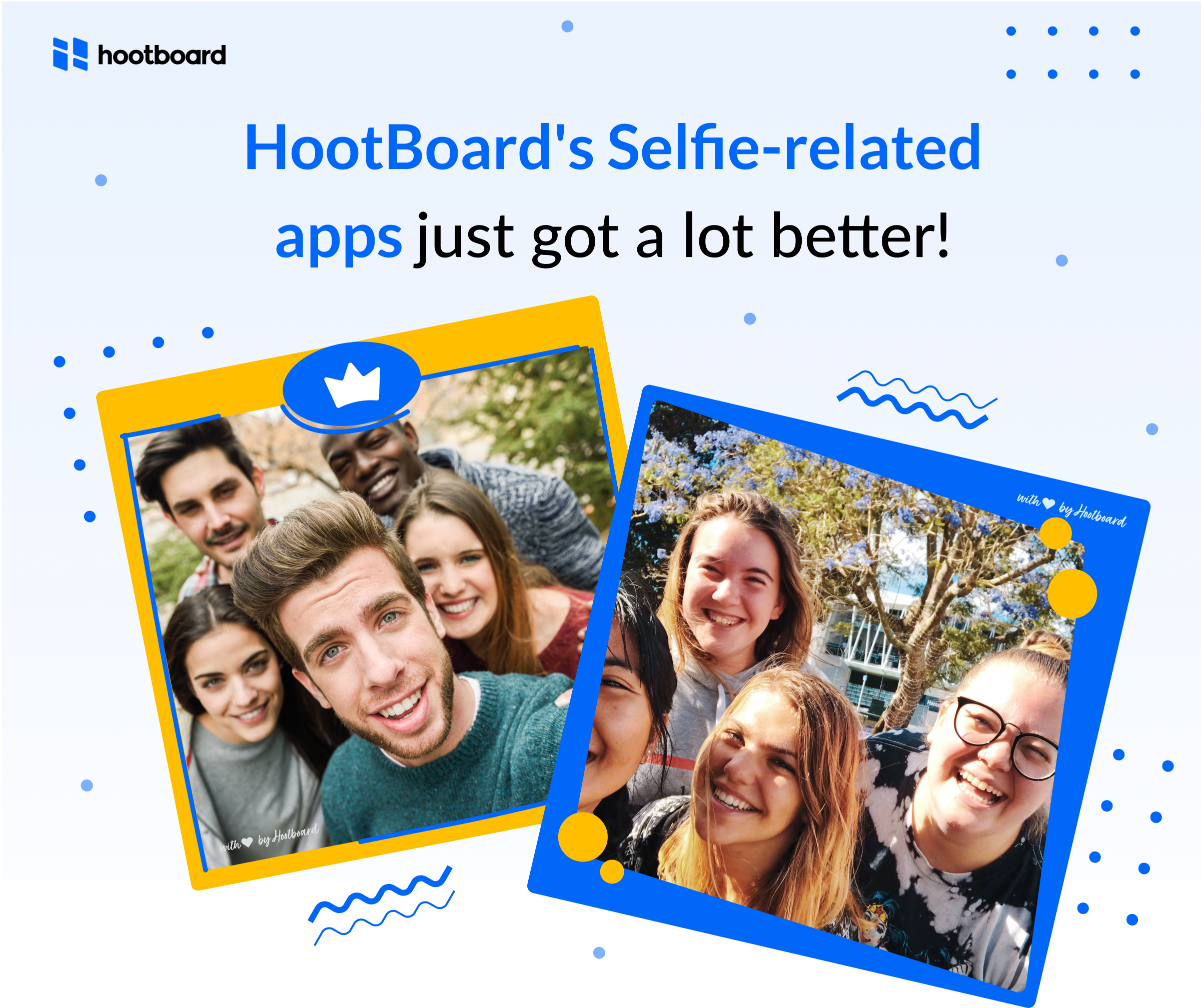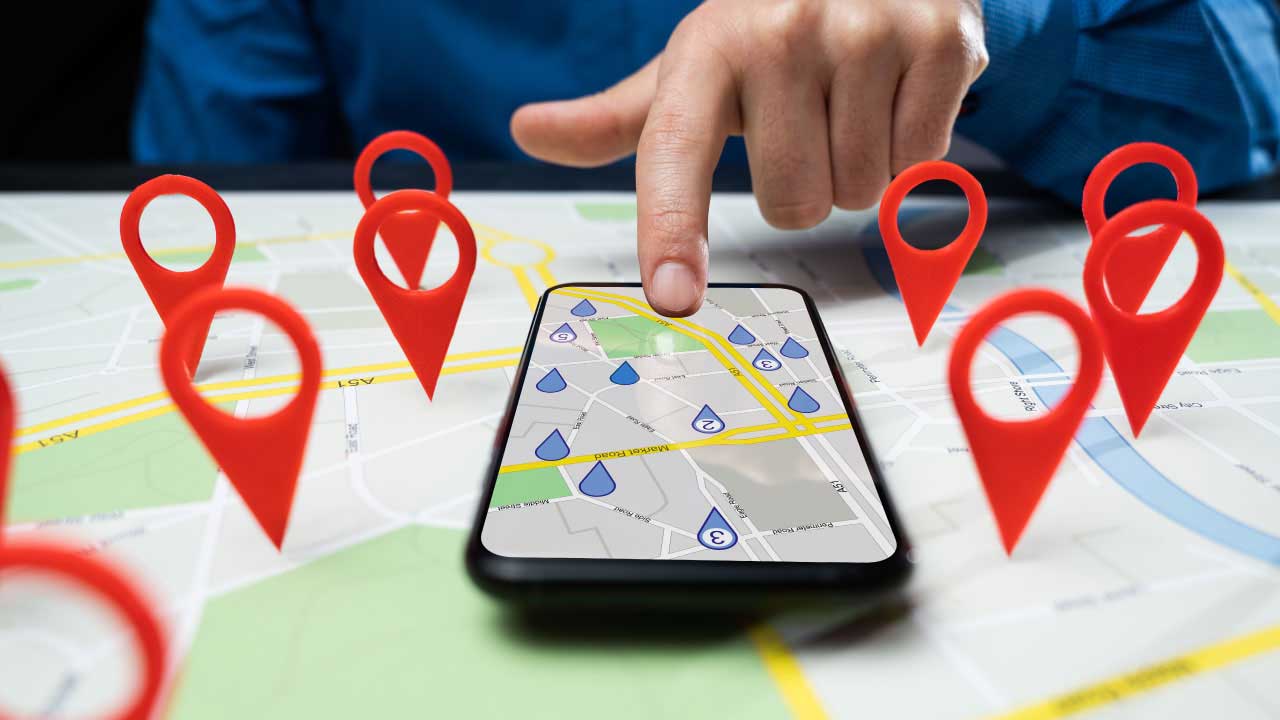As we wave goodbye to 2023 and welcome 2024, it’s time to reflect on the travel industry trends that have shaped the industry as well as destination marketing organizations, and anticipate what’s on the horizon. From the resurgence of leisure and business travel to the rise of AI and AR in enhancing tourist experiences, there’s plenty for tourism marketers to get excited about.

HootBoard’s Impressive Year in Review Recap
We’re excited to share some of the key metrics that highlight HootBoard’s successful year:
- A massive 2.39 million audience interactions were recorded, demonstrating the active and engaged community on our platform.
- Our screens were touched more than 1.42 million times, reflecting our users’ keen interest and engagement.
- A total of 801.9K Hoots were viewed, indicating the high level of user interaction with the content shared on our platform.
- Our Selfie App saw a significant 242K engagements, showcasing its popularity among our users.
- The CityGuide feature attracted 59.9K total engagements, helping our users discover local insights.
- We recorded 32.36K selfies clicked, highlighting the fun and personal aspect of our platform that users enjoy.
These remarkable achievements reflect the hard work of our team and the strong support from our users. We are proud to serve our visitors and are committed to further improving and expanding our offerings. Here’s to another year of growth, innovation, and success at HootBoard.
Let’s take a closer look at what to expect from Travel in 2024.

Rising from the Ashes: The Resurgence of Travel
According to Mastercard Services, both leisure and business travel have seen a significant upswing, growing by 33% by the end of March 2023 compared to the same month in 2019. This represents a whopping 42% year-to-date change, signaling a robust recovery from the pandemic-induced slump.
A survey by Prosper Insights & Analytics further supports this trend, suggesting that travel is finally climbing back to pre-COVID numbers.
What’s Driving Travel Interest in 2024?
Several factors are set to drive travel interest in 2024. One potential influence is the world events of elections happening in various countries. Political transitions often spark curiosity and interest in a country’s culture, history, and current affairs, potentially attracting more tourists.
Moreover, the continued reopening of Asia for tourism and the launch of ambitious new hotels, as reported by Roadbook, are likely to drive global tourist traffic.
How should Tourism Marketers Prepare?
- Embrace Technology- Tourism directors should invest in the latest technological advancements, such as AI, AR, and VR, to enhance the tourist experience. They can create virtual tours, offer online booking facilities, and provide real-time updates about attractions to make travel easier and more enjoyable for tourists.
- Promote Sustainable Tourism – Sustainability is a growing concern for travelers. Directors should therefore focus on promoting eco-friendly practices, such as reducing waste, using renewable energy sources, and promoting local and ethical tourism.
- Cater to Different Types of Travelers – Understanding that travelers have different interests and needs is critical. Directors should offer a range of experiences that cater to various types of tourists, from adventure seekers to history buffs, and families to solo travelers.
- Capitalize on Major Events – With various elections taking place around the world, tourism directors should leverage these events to draw interest in their regions. They can highlight local history, culture, and society related to these events to attract tourists.
- Prepare for Increased Traffic – With the anticipated resurgence of travel, directors should ensure that their destinations are ready to handle increased traffic. This includes ensuring adequate accommodation, transportation, and amenities for tourists.
- Collaborate with Other Stakeholders – Directors should collaborate with other stakeholders, like local businesses, government entities, and community groups, to create a cohesive, inviting experience for tourists.
- Leverage Social Media – Social media is a powerful tool for promoting destinations. Tourism directors should use platforms like Instagram, Facebook, and Twitter to share stunning visuals, exciting events, and enticing deals that draw visitors in.

The Rise of AI and AR in Travel
Artificial Intelligence (AI) and Augmented Reality (AR) are revolutionizing the way people travel. AI has made it possible to personalize travel experiences, providing recommendations based on past behaviors and preferences. For example, AI-powered chatbots can assist with booking flights and accommodations, making the process more efficient and tailored to individual needs.
How to Use this Technology?
- Personalized recommendations – AI can analyze past user behavior to suggest tailored travel recommendations. This can include suggested destinations, preferred types of accommodations, or even recommended activities based on the user’s past preferences.
- Automated customer service – AI can be used to power chatbots that provide 24/7 customer service, answering frequent questions, helping with bookings, or handling complaints without the need for human intervention.
- Predictive pricing – AI can analyze trends and patterns in pricing data to predict future price changes. This can help travelers to book at the most cost-effective times and can help businesses to optimize their pricing strategies.
- Travel planning – AI can assist in planning travel itineraries by suggesting optimal routes, estimating travel times, and recommending activities based on the traveler’s preferences and constraints.
- Improved Accessibility – AI technology such as image recognition and language processing can be used to make travel more accessible. For example, AI could translate signage into the traveler’s language in real-time, or provide descriptions of visual content for visually-impaired travelers.
AR, on the other hand, is enhancing tourist experiences by providing interactive and immersive tours. Think about visiting a historic site and using an AR app to see how it looked hundreds of years ago. Or imagine walking down a city street and pointing your phone at a restaurant to see reviews and menu items pop up in real-time.

Key Trends for Tourism Marketers
For tourism marketers, 2023 brought several key trends to note. The International Luxury Hotel Association highlighted eco-tourism, experiential travel, digital nomadism, and wellness travel as some of the top trends.
How can tourism directors use this information?
- Leverage AI and AR Technology – Tourism directors can use AI to provide personalized experiences, such as tailored recommendations based on past behaviors and preferences. AR can be used for interactive and immersive tours, enhancing the tourist experience.
- Promote Eco-Tourism – With the rise of eco-tourism, directors should highlight their efforts towards sustainability and eco-friendly practices. This could include waste reduction initiatives, the use of renewable energy sources, and the promotion of local and ethical tourism.
- Highlight Experiential Travel – As experiential travel continues to trend, directors can promote unique, local experiences that allow tourists to immerse themselves in the local culture and environment.
- Cater to Digital Nomads – With the rise of digital nomadism, directors can create and promote facilities that cater to this demographic, such as co-working spaces and long-term accommodation options.
- Emphasize Wellness Travel – As wellness travel gains popularity, directors can promote wellness-focused amenities and activities like yoga retreats, hiking trails, and healthy dining options.
- Prepare for Increased Interest – With the resurgence of travel and the anticipation of major world events, directors should ensure their destination is prepared to handle increased tourist traffic. This could involve ensuring accessible and adequate accommodation, transportation, and other amenities.
- Collaborate for Success – Directors can use the projected trends as an opportunity to collaborate with local businesses, government entities, and community groups to create comprehensive, appealing experiences for tourists.
- Harness Social Media Power – Directors can use social media to highlight the trends and attractions in their area, using stunning visuals and compelling content to draw visitors in.
These trends suggest that travelers are seeking meaningful engagements and unique experiences. They want to connect with the places they visit, whether it’s through nature, culture, work, or health and wellbeing. For tourism marketers, this means crafting narratives and marketing strategies that highlight these aspects.

Why Tourism Marketing Directors Should Be Excited for 2024
With travel on the rise, the integration of AI and AR technology, and the continued emphasis on personalized and meaningful travel experiences, 2024 promises to be an exciting year for tourism marketing directors. The possibilities for innovative marketing campaigns and strategies are vast, and those who can tap into these trends will be at the forefront of the industry’s future.
The travel industry has shown remarkable resilience and adaptability in the face of challenges. As we move into 2024, the sector is poised for further growth and innovation. For tourism marketers, this presents a wealth of opportunities to engage with travelers in new and exciting ways. Buckle up – it’s going to be an incredible ride.




